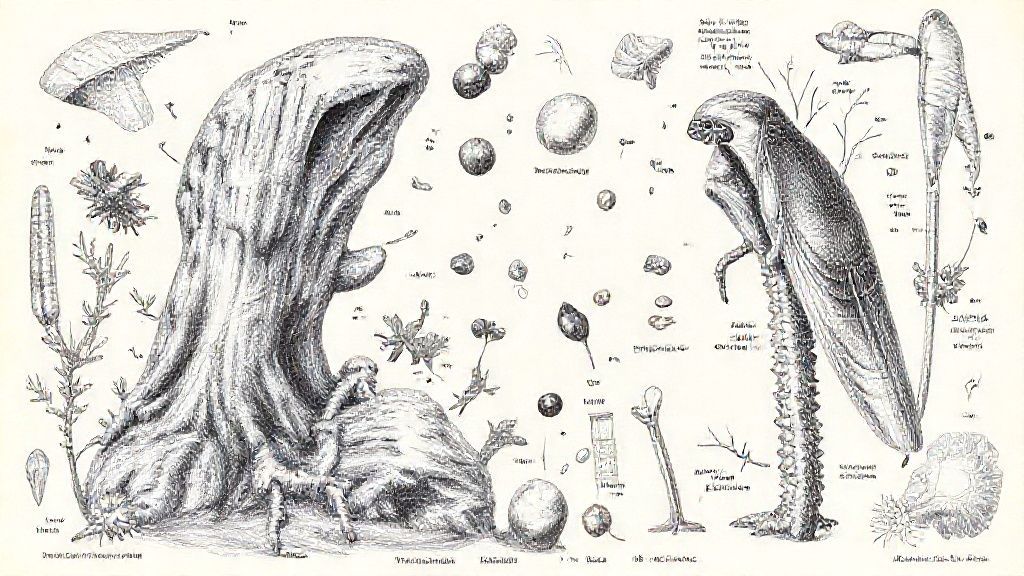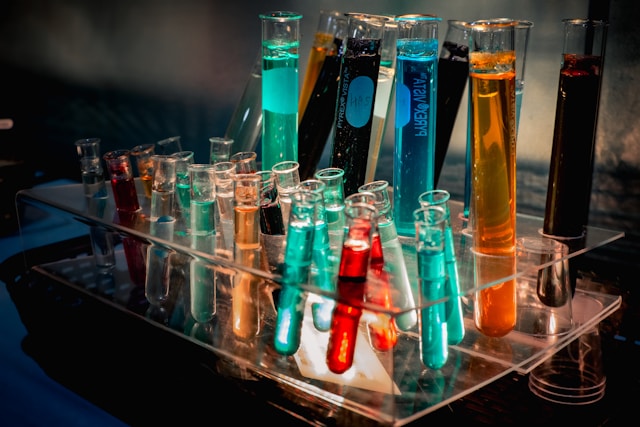Acids, Bases and Salts represent fundamental categories in chemistry that play crucial roles in various chemical reactions and real-world applications. Understanding their properties, behaviour in different reactions, and how they interact with each other forms the basis for deeper chemical knowledge that extends far beyond the classroom. In this detailed guide, we will delve into the intricacies of acids, bases and salts, their chemical properties, their acid-base reactions, and their significant presence in everyday life.
What are Acids?
Acids are substances that release hydrogen ions (\( \text{H}^+ \)) when dissolved in water, thereby increasing the concentration of \( \text{H}^+ \) ions in the solution. Acids exhibit characteristic properties such as a sour taste, the ability to turn blue litmus paper red, and their reactive nature with metals.
Common Examples of Acids:
- Hydrochloric Acid (HCl): Used in cleaning agents.
- Sulfuric Acid (H₂SO₄): Employed in battery acid.
- Acetic Acid (CH₃COOH): Found in vinegar.
\( Hydrochloric Acid (HCl) + Water ((H_2 O)) → Hydronium ((H_3O^+)) + Chloride ((Cl^-)) \)
Properties of Acids:
– Acids taste sour.
– They provide hydrogen ions (\(H^+\)).
– They conduct electricity in an aqueous solution.
– They react with bases to form salts and water.
We also Published
- Sets
What is a set? A\xa0Set\xa0is a collection of items. The collection can be either real-world objects or imaginary or theoretical entities. It can be a collection of numbers, alphabets, colors, countries’ names, etc. - Theorem# Limit of cosθ as θ → 0
As θ → 0, we have cosθ → 1 Proof : When θ = 0, We have, lim(_{θto 0} cos )θ = cos0 = 1\xa0 \xa0{ ∵ cos0 = 1 } Hence, lim(_{θto 0} cos )θ = 1 - Genomics and Personalized Medicine: Empowering Healthcare with Genetic Insights
Introduction In a world that’s increasingly personalized, from curated news feeds to tailored advertisements, it’s no surprise that this trend has permeated healthcare. Genomics, the study of all of a person’s genes (the genome), is at the forefront of this shift, empowering a personalized approach to medicine. Here’s how genomics and personalized medicine are reshaping […]
What are Bases?
Bases are substances that release hydroxide ions (\( \text{OH}^- \)) when dissolved in water, thus increasing the \( \text{OH}^- \) ion concentration in the solution. Bases exhibit properties like bitter taste, slippery feel, and the ability to turn red litmus paper blue.
Common Examples of Bases:
- Sodium Hydroxide (NaOH): Used in soap making.
- Calcium Hydroxide (Ca(OH)₂): Known as limewater.
- Ammonium Hydroxide (NH₄OH): Found in household cleaning solutions.
Example Reaction:
\( Sodium Hydroxide (NaOH) + Water ((H_2O)) → Sodium ((Na^+)) + Hydroxide ((OH^-)) \)
Properties of Bases:
– Bases taste bitter.
– They feel slippery.
– They provide hydroxide ions (\(OH^-\)).
– They conduct electricity in an aqueous solution.
– They react with acids to form salts and water.
Understanding Salts
Salts are ionic compounds arising from the neutralization reaction between acids and bases. They consist of positive ions (cations) from the base and negative ions (anions) from the acid.
Common Examples of Salts:
– **Sodium Chloride (NaCl):** Common table salt.
– **Calcium Carbonate (CaCO₃):** Found in chalk and limestone.
– **Potassium Nitrate (KNO₃):** Used in fertilizers.
Example Reaction:
\( Hydrochloric Acid (HCl) + Sodium Hydroxide (NaOH) → Sodium Chloride (NaCl) + Water ((H_2O)) \)
Properties of Salts:
– Salts form through acid-base neutralization reactions.
– They often crystallize from solutions.
– Salts can conduct electricity when dissolved in water or melted.
Acid-Base Reactions
Acid-base reactions are pivotal in chemistry, involving the transfer of hydrogen ions (( \text{H}^+ )) from the acid to the base, leading to the formation of water and salt. These reactions are also known as neutralization reactions.
Neutralization Example:
\[ \text{HCl} + \text{NaOH} \rightarrow \text{NaCl} + \text{H}_2\text{O} \]
Equation for Neutralization:
\[ \text{Acid} + \text{Base} \rightarrow \text{Salt} + \text{Water} \]
Everyday Applications of Acids, Bases, and Salts
Acids, bases, and salts find extensive applications in daily life. From culinary arts to industrial processes, their presence is ubiquitous and indispensable.
Applications of Acids:
- Culinary: Vinegar in food, citric acid in beverages.
- Industrial: Cleaning metals with sulfuric acid.
- Medical: Ascorbic acid (Vitamin C) supplements.
Applications of Bases:
- Household: Sodium bicarbonate in baking.
- Industrial: Processing textiles using caustic soda.
- Medical: Milk of magnesia for indigestion.
Applications of Salts:
- Culinary: Sodium chloride as seasoning.
- Agriculture: Potassium nitrate in fertilizers.
- Industrial: Calcium chloride in de-icing roads.
Chemical Equilibrium in Acid-Base Reactions
Chemical equilibrium in acid-base reactions deals with the balance between forward and reverse reactions. The equilibrium constant \( K_a \) for acids and \( K_b \) for bases quantify the strength of acids and bases respectively.
Formula for \( K_a \):
\[ K_a = \frac{\left[ \text{Products} \right]}{\left[ \text{Reactants} \right]} \]
Formula for \( K_b \):
\[ K_b = \frac{\left[ \text{Products} \right]}{\left[ \text{Reactants} \right]} \]
Chemistry begins in the stars. The stars are the source of the chemical elements, which are the building blocks of matter and the core of our subject.
By understanding and leveraging these constants, chemists predict the direction and extent of chemical reactions.
Chemistry in Action
In conclusion, Acids, Bases and Salts form the cornerstone of chemistry, with their ubiquitous presence in both educational and practical realms. Their study enables a better understanding of chemical reactions, industrial processes, and everyday applications, fostering a deeper appreciation for the dynamic world of chemistry.
RESOURCES
- Acids, Bases and Salts | PPT
- (a) Define acid, base, and salt. (b) Give three examples of acid, base, and salt. | Homework.Study.com
- Captcha Challenge…
- KryssTal : Acids, Bases and Salts
- Acids and Bases Study Guide – Inspirit Learning Inc
- Worksheet: Acids, Bases, and Salts
- Acids, Bases and Salts: Experimental Definitions, Arrhenius Concept, Q&A
- Acids & Bases | Differences, Example & Characteristics – Lesson | Study.com
- Captcha Challenge…
- Identifying Acids, Bases, and Salts.








0 Comments